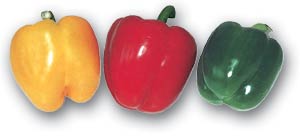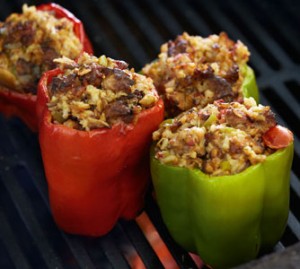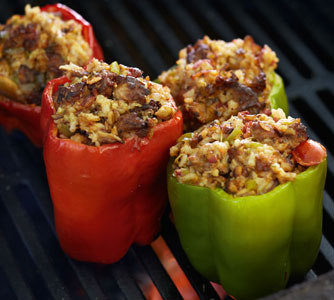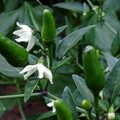The bell pepper is a pod type of the annuum species. They are multi-stemmed with a habit that is subcompact tending toward prostrate, growing between 1 and 2 ½ feet tall. The leaves are medium-green, ovate to lanceolate, smooth, and are about 3 inches long and 1 ½ inches wide. The flower corollas are white with no spots. The pods are pendant, 3- or 4-lobed, blocky, and blunt. Their immature color is dark green, usually maturing to red, but sometimes to yellow, orange, or purple. The pungent variety, ‘Mexi-Bell’ has only a slight bite, ranging from 100 to 400 Scoville Units.

Bells are the most commonly grown commercial peppers in the United States, with approximately 65,000 acres under cultivation in the U.S. Mexico follows with about 22,000 acres, and most of their bells are exported to the U.S. More than 100 varieties of bell peppers have been bred, and we have chosen our selections on the basis of color, pungency, disease resistance, and availability to the home grower.
Bells grow well in sandy loams with good drainage. The hotter varieties are usually grown in the home garden. The growing period ranges from 80 to 100 days, depending on whether it is picked green or at the mature color. A single plant produces 10 to 20 pods. A recommended variety is ‘Mexi-Bell.’

Culinary Use
Bells are often used in the fresh form, cut up in salads, or stuffed with meats and baked. Pungent bells are also used in fresh salsas. Also, they are a common ingredient in Cajun and Creole cookery. All varieties can be preserved by freezing.
Latest posts by Dave DeWitt (see all)
- Enchiladas Verdes con Chile Pasado - 02/08/2023
- Smoked Oysters with Ancho Chile Sauce - 01/13/2023
- Machaca Sierra Madre - 01/11/2023








